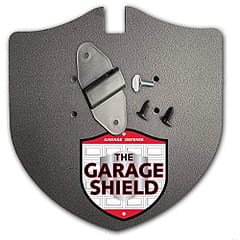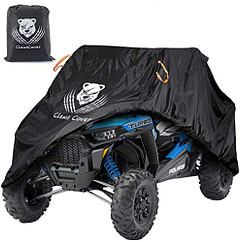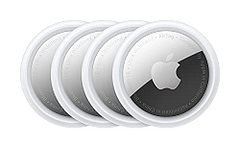Adventure School participates in the Amazon Services LLC Associates Program, an affiliate advertising program for sites to earn advertising fees by advertising and linking to amazon.com
How common is bike theft?
Bike theft stats
Stats from New York City show that about 21 bikes were stolen every day in 2020. On top of that, data from the International Crime Victim Survey (2000) show that only about 56% of stolen bikes are reported to the police. You don’t need to see these stats to know that your expensive mountain bike is a hot target for thieves, but the stats show that bike theft is on the rise.
Yes, bikes do get recovered and yes, thieves do face criminal charges but don’t count on that happening in your case. Many bikes are never seen again. This article is to help you keep your bike from ever being stolen in the first place, but we’ll also talk about what to do to improve your odds of getting it back if it does get stolen.
More specifically to high-end mountain bikes, the stats are still not great. In an unofficial Facebook survey of mountain bikers in Utah, only 35.5% of respondents reported having a bike stolen at any point (n=141).
Of that 35.5%, the location and conditions of the thefts are published in the graph below.

The main message I get out of this data is that if you keep your bike out of sight in a protected place, you’re less likely to find it stolen. For many of us, keeping a bike (or many bikes) inside our house just isn’t practical. So if you must keep a bike in your garage or shed, what can you do to keep it from becoming a statistic?
How do you prevent bike theft?
Watch this video to see how easy it can be for thieves to steal bikes in broad daylight.
Is it secret? Is it safe?
-
Garage Shield$25.95
The first and best way to keep your bike safe is to keep it out of sight of any thieves. Storing your bike in the house or in your car under a blanket is your best bet. If a thief doesn’t know your bike exists, they won’t try to steal it. Unfortunately, these options aren’t practical for all of us. Between my whole family, we’ve got eight bikes to store. There’s no way all those are fitting in our house and they definitely won’t fit in the car.
So if not in the house, the next best option is in a secure garage or storage shed. Secure means no windows, deadbolted doors, and a secured garage door lift mechanism. Thieves can quickly release a garage door mechanism and open your garage door with a coat hanger unless you put a security device in place or zip tie your release cord in place which can be dangerous if you ever need to release the door in a hurry.
If your garage is like mine and has several windows, a thief could easily just bust out a window and be in your garage in a few seconds.
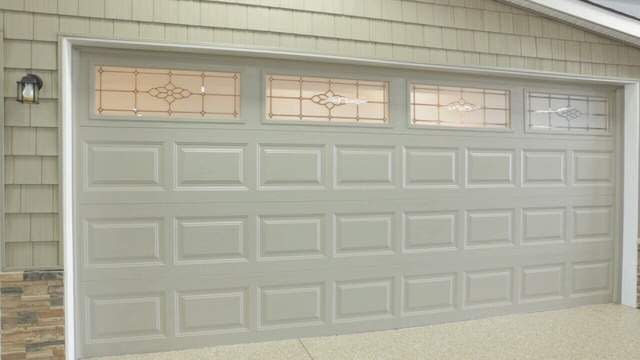
In order to secure my bikes, I installed a ground anchor into the concrete foundation wall and I lock my bikes up with a heavy-duty chain and padlock when I’m not using them. This setup is sold secure gold certified for bikes which means it will take a thief with the right tools making a ton of noise and likely over 5 minutes to get through it. It’s not thief-proof, but it certainly sends the message that other bikes are easier to get.
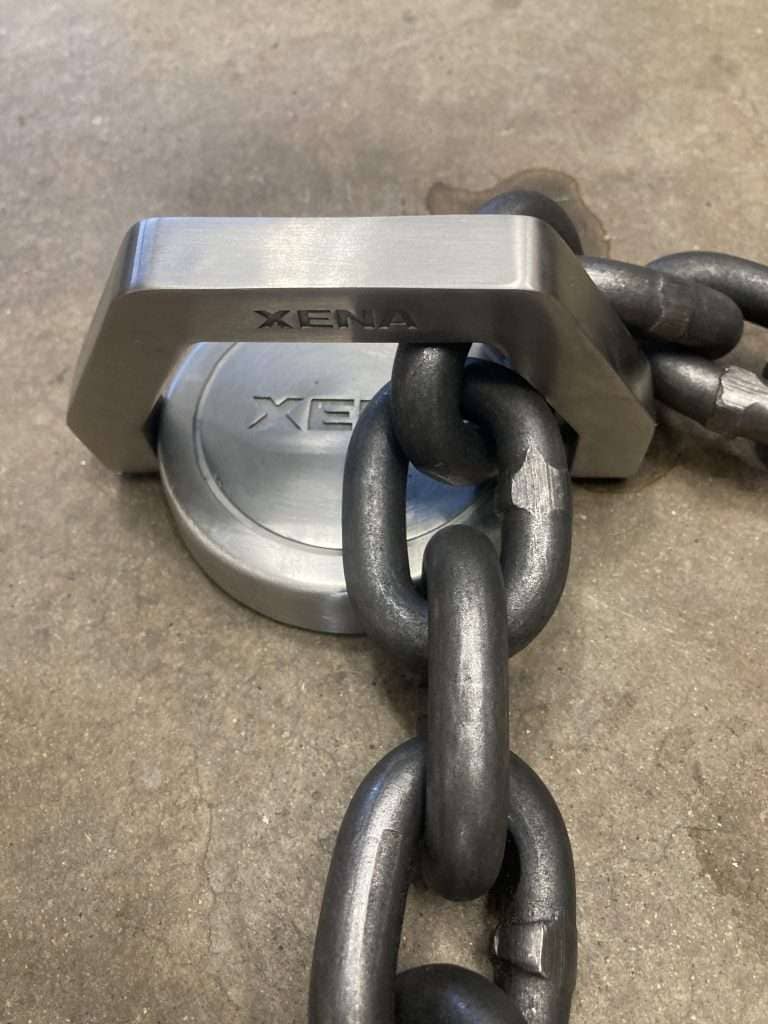
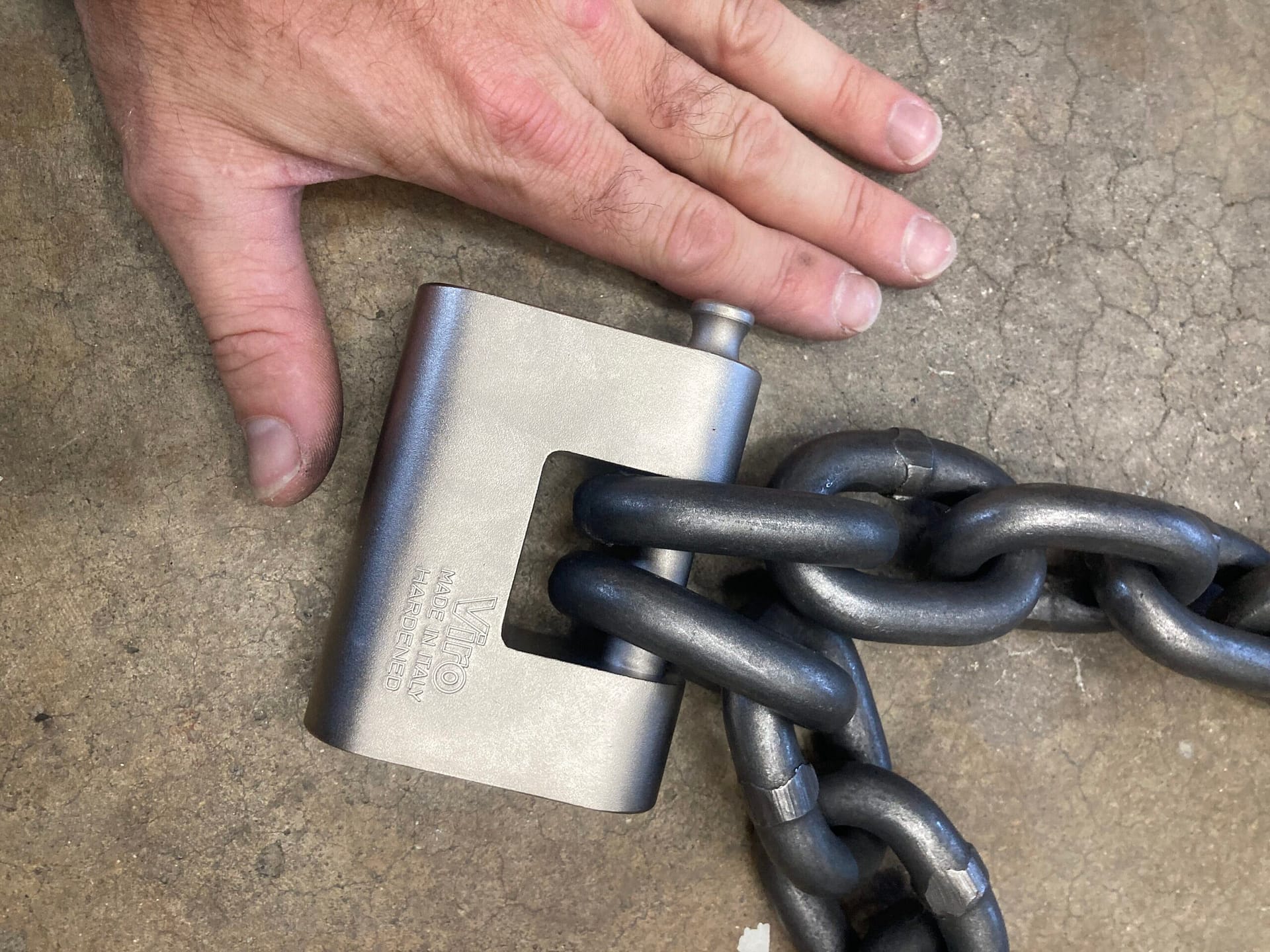
I also have a video camera set up to record the bikes and ping my phone when movement is seen. With all this, I think my bikes are pretty secure … but there’s more.
Keep bike thieves away
I don’t know exactly how thieves around my area locate and target houses with valuable bikes, but I take several precautions to prevent them from targeting my house.
If you use Strava or other activity tracking apps, you may be unknowingly publishing your location to the world when you record rides starting or ending at your front door. Also, if you have the make and model of your bike listed, thieves can possibly see that too. I recommend using a nickname for your bike to keep the make and model private.
To keep your home location private, Strava and other activity trackers allow you to set up a privacy perimeter that obscures your route when you get within a specified distance of your house.
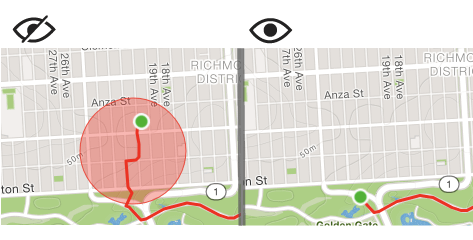
Another way thieves may find your bike is to scout you out at the trailhead and then follow you home. The easy way to prevent this from happening is to stay alert and notice if you’re being followed. If so, just head somewhere besides home until you lose the tail.
Additionally, use common sense when posting online. Thieves can sometimes search public records such as property tax databases using your full name and county to find your address. If your Facebook, Strava, or other social media profile name is complete enough to allow someone to search using your legal name or close to it, and you post about the new bike you got or share pictures of your sweet ride, you may be opening the door to would-be thieves.
So the bottom line of this whole section is to keep your bike secret and don’t lead people to where it’s stored.
If you use Strava, you’ll probably benefit from learning why mountain biking is the best form of exercise for weight loss.
What about when you’re transporting the bikes?
The poll from our Facebook group showed 8% of bikes are stolen while on a bike rack on the car. This isn’t huge, but a few tips can keep your bike safe from sticky fingers.
Always lock them up. Yep, even if you’re just driving to the trailhead, there have been reports of people stopping at a stoplight and having someone run up, grab the bike, and disappear within a matter of seconds. This isn’t likely, but a simple cable lock would slow down or discourage a thief enough to prevent this. Some bike racks come with locks built-in. Here’s the built-in lock on my rack
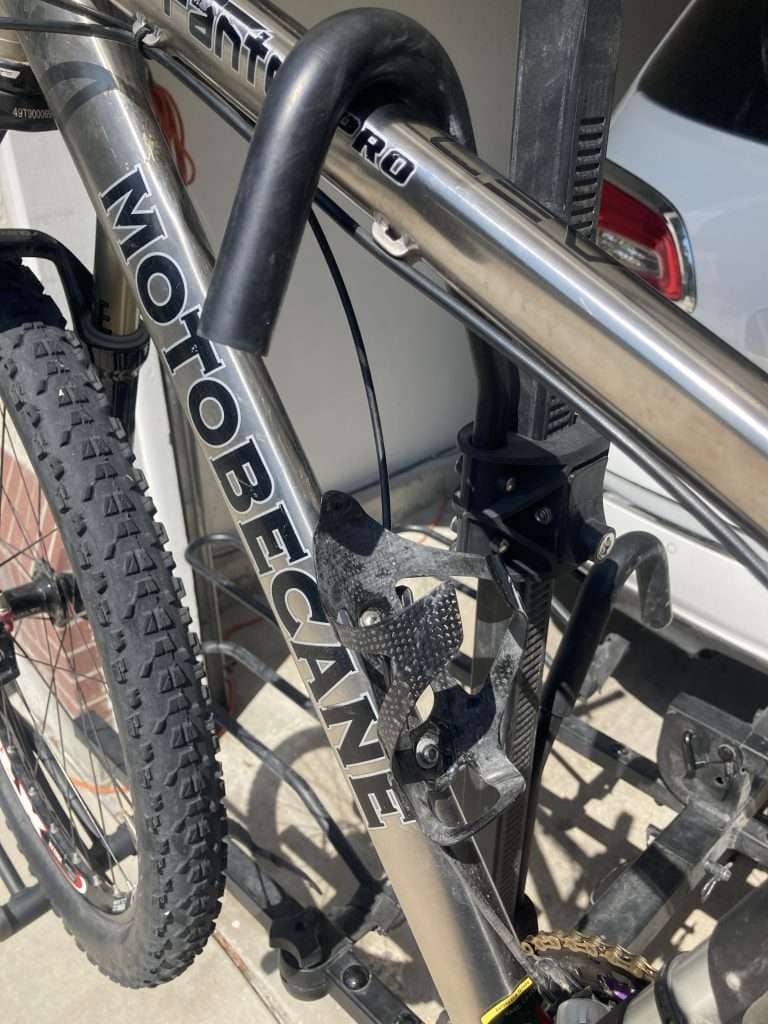
Keep your bikes in eyesight. I often swing by a restaurant to grab a bite after a ride. When I do, I ensure my bikes are always locked, but I also park in a way that allows me to see my bikes the whole time I’m away from them. I back in and park near a window. If reasonable, I’ll also stay in the car and send someone else in to get my food. Just don’t leave them unattended on your car and you should be safe.
-
UTV Cover$47.99
Cover your bikes. They’re less likely to get stolen if a would-be thief can’t make out what model of bikes you have. A simple cover over your bikes and hitch can not only keep them safe from theft but also protects them from road grime, dust, and the elements as a bonus. I usually have 4-6 bikes on my car at a time, so instead of getting several pricey bike covers, I opted for a larger cover for a UTV.
If you have to leave your bike with your car for an extended period (meaning longer than a minute or so), your safest option is to put the bike inside the car. Six percent of the bikes stolen were stolen out of cars, so this certainly isn’t foolproof.
The trick to keeping your bike in your car is to not let anyone know it’s there. This starts by not putting the bike in the car in a visible location. Drive somewhere secluded and ensure nobody is watching you, then put the bike in the car and cover it up with a blanket or other objects that will conceal its identity. If you have tinted windows or window shades, that will help as well.
Park your car in a moderately busy location and look for CCTV coverage where you park.
When you go on a bike vacation, be sure to never leave your bikes on the car rack even if it’s in the hotel parking garage. Bring the bikes into the hotel room with you. For me, packing 6 or more bikes into a hotel room can be problematic so I usually look for a hotel room not on the ground floor with a patio. All the bikes go out on the patio.
Most hotels in bike destination cities like Moab, Breckenridge, or Whistler are cool with you bringing dirty bikes into the rooms, but if you run into one that isn’t, insist that they offer a storage solution that isn’t accessible to the public. They often have luggage storage rooms near the concierge desk.
Bike theft in public
In our Facebook survey, 36% of self-selected respondents (n=141) that have had a bike stolen had it stolen from a bike rack in a public location such as at a bus stop or a school campus. You’re clearly taking a risk anytime you leave your bike locked up outside at a bus station, at school, or outside buildings you’re visiting. The easiest solution to this situation is to never leave your bike out in public places like this. Just don’t do it – at least not with your $6,000 mountain bike.
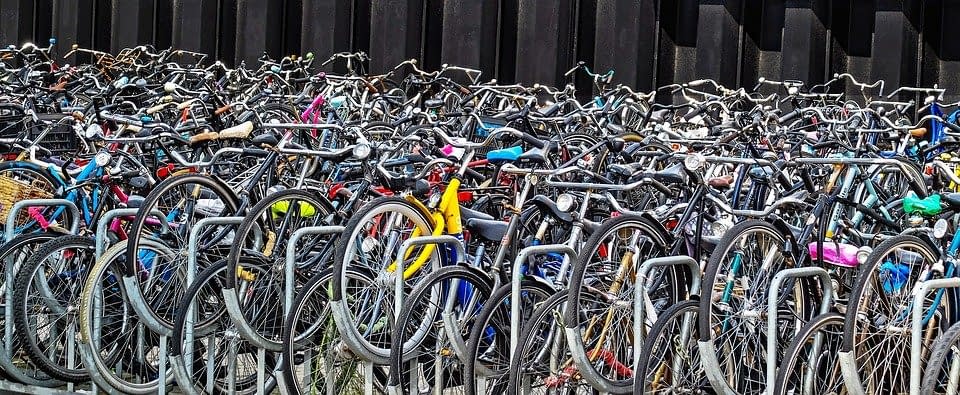
My first recommendation is to pick up a cheap used bike for a few hundred bucks to use as a commuter bike. You’ll still be mad if it’s stolen, but not nearly as much as if your high-end bike goes missing.
If you must park a nice bike in public or even if you have a cheap bike but don’t want it jacked, the first thing to try is to take the bike inside the building with you if you can.
If you wheel your bike in confidently, most locations won’t stop you from bringing a bike in. Schools, grocery stores, malls, hotels, and hardware stores are all places I’ve seen people wheeling around bikes.
Of course, there are some instances where you just can’t take the bike inside. If you absolutely must leave it out, the best situation is one where you’ll be able to keep visual contact with the bike the whole time. Not always possible, but do your best here. If you can leave someone in the car while the rest of the crew goes for a quick grocery run or orders lunch, you’ll be much better off.
The next best option is to lock the bike up somewhere with moderate traffic and many other bikes to choose from. If you can make your bike more difficult to steal than the next one, you’ll buy some security. This means you’ll typically be looking for designated bike racks with nicer bikes on it. These are sometimes monitored by CCTV, which can help deter thieves but don’t count on security film getting you a stolen bike back.
Put your bike in the middle of the pack in a location that’s not as easily seen or accessed as other bikes.
Don’t routinely use the same location to lock your bike up. Thieves may scout a rack to see how long you’ll be gone and then come back the next day to find your bike in the same spot and know they have hours until you come back.
No lock will stop a prepared and determined thief, but having a good lock and using it properly may give them a reason to jack someone else’s bike and leave yours alone.
We’ll talk about which locks are best in a bit, but before that, I think discussing how thieves go about cracking locks will help you decide which locks may be best for your scenario.
How are bikes stolen?
So now we’ve talked about many ways to keep your bikes from becoming other people’s property. Next, I’d like to dig into a bit more of the details of how thieves operate. If you want to skip past this section, the last section is all about what locks, chains, cables, and hardware you need to keep your bikes secured.
Part of preventing your bike from getting stolen is to understand the bike theft methods. Many common battery-powered tools or hand tools like angle grinders, bolt cutters, hammers, lock picks, and bottle jacks are easy for thieves to buy and carry with them. These tools of the trade make it quick and easy for thieves to snatch your bike before you even have a chance to catch them.
Here are the common methods thieves use to get your bike.
Lifting — Thieves lift the bike and lock over the top of a post to which the bike is secured. These types of poles or posts are called sucker poles because only suckers use them. If it’s a signpost, then the thieves may remove the sign to lift the bicycle off the top. Sometimes the post itself is not anchored securely and can be lifted, cut, or removed.
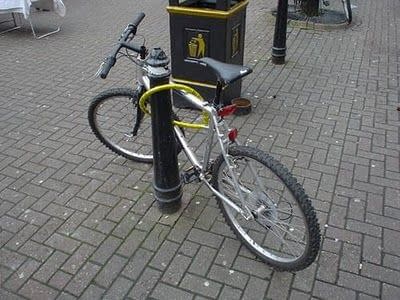
Levering — Thieves will use the gap between the rack and the bike left by a loosely fitted lock to insert tools such as jacks or bars to lever the lock apart. Thieves will even use the bike frame itself as a lever by rotating it against the stand or other stationary object to which it is locked. Either the bike or the lock will break.
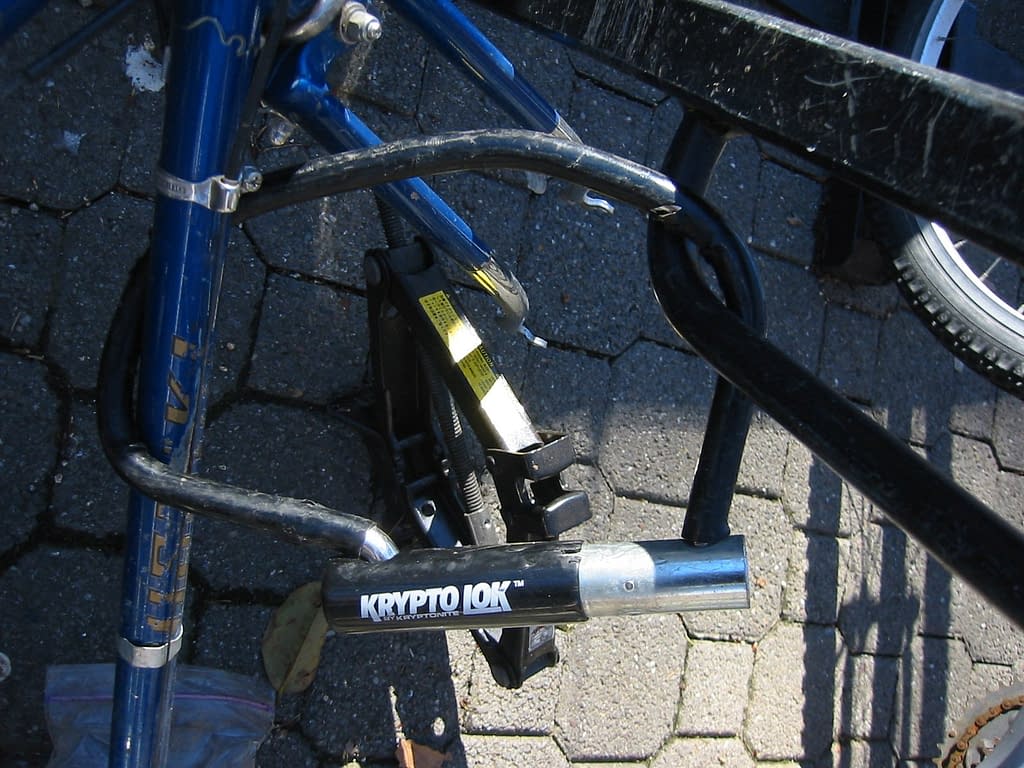
Striking — If you lock your bicycle leaving the chain or lock touching the ground, thieves may use a hammer and chisel to split the securing chain or lock. Sometimes thieves use Freon to freeze the lock to a point where a light tap from a hammer will shatter it.
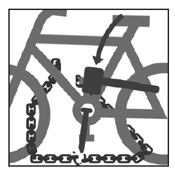
Unbolting — Thieves know how to undo bolts and quick-release mechanisms and often carry tools for this purpose. If you lock a bike by the wheel alone, then it may be all that is left when you come back. If you lock only the frame, then a bike thief may steal just the wheels. You know that if you’ve looked at upgrading your wheels, they can be pretty pricey. Other parts of your bike are as well. Thieves may just piece out your bike and leave the rest be, but be warned that oftentimes, if you leave the frame locked up after losing your wheels or seat, the thief may come back later to collect the rest of the bike.
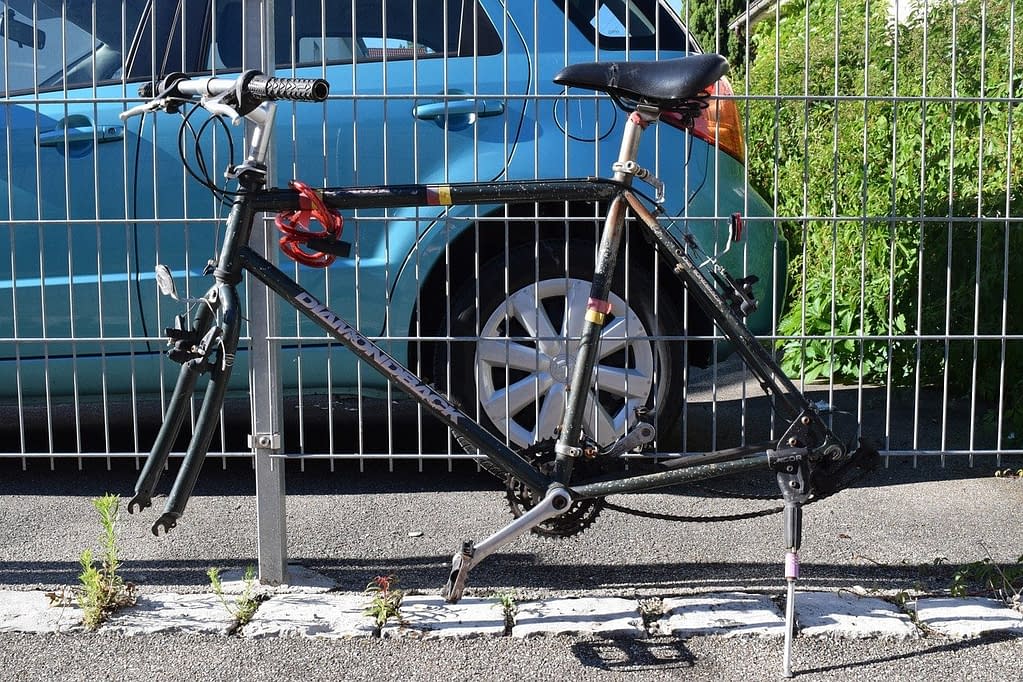
Cutting — Thieves are known to use bolt cutters, hacksaws, and angle grinders to cut their way through locks and chains. It doesn’t take very long and can be done without much noise. Grinders do create a bit of noise and sparks, but most people might not assume they’re stealing a bike and won’t say anything.

Picking — For locks requiring keys, thieves can insert tools into the keyhole itself and pick the lock open. With a bit of practice, many locks can be picked very quickly.
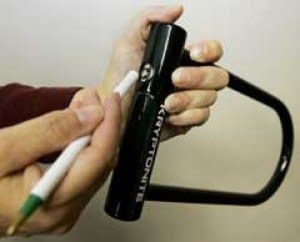
Jamming — Keyed locks can be jammed with broken keys, super glue, wax, gum, or plenty of other sticky things. When you come to open the lock, you’ll be unable to and will have to leave the bike there. The thieves will come back when it’s safer and with the proper tools to rip off your bike.
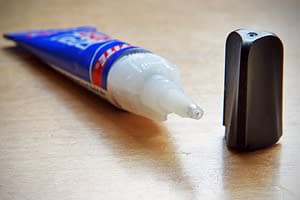
Double-Locking — Similar to jamming, thieves sometimes put their own lock on your bike so when you come to take it – you can’t. Then they come back at a convenient time and cut your lock off and take your bike, or if you’re not thinking clearly after finding your bike held hostage, you might just take your lock off and leave the thieves entirely in control of your bike.

Alright, now that you know some of the devious methods thieves use to steal bikes, let’s discuss what locks you can buy to reduce your chances of being a bike theft victim.
Types of Locks
The type of lock you use and how you use it makes a big difference in keeping your bike safe. Sometimes all you need is a cheap cable lock, but most times a cable lock won’t even slow down a prepared thief. Let’s break down lock types.
Cable or coil lock— these are the locks you commonly see for sale at big box stores. They’re cheap, easy to find, but also easy to cut. A pair of bolt cutters can snip through a cable lock without much effort at all. While a cable lock will stop an opportunistic thief that isn’t prepared and planning to steal a bike, any thief that’s prepared and looking to steal a bike will have the right tools to snip a cable lock.
Cable locks are good to have around for when you put your bike on the car rack and leave it exposed but don’t use this lock for more than that. Some cable locks are keyed and some have codes. A coded lock is usually pretty easy to hack, but it’s more likely the lock cable will just be cut. Here’s a cable lock that I recommend (just not for more than simple locking needs).
D or U lock— D locks or U locks are solid steel bars bent in a U shape with another bar that secures onto the end to form a D. These locks can be very secure if you get a high-quality one and use it properly.
The main problem with U-locks is they can be hard to use properly. They need to be as small as possible to leave no room for a jack or other tool to fit inside them. This means you have limited options for when and where you can use these. They also don’t lock your whole bike so using a cable or chain lock for the wheels in conjunction with a U lock can be a good combo.
Chain lock— a chain lock is just a big steel chain that is connected together with a padlock of some kind. Chains come in many thicknesses and qualities. A cheap one is no better than a cheap cable lock. A pair of bolt cutters will snip through it in a hurry. A heavy-duty hardened 14 or 16-mm chain is nearly uncuttable with common hand tools, but they weigh a ton so are best used in stationary applications like in your garage. Also note, that bike thieves will look to attack the weakest link so if you have a super fat chain but have a crappy padlock, they’ll just smash the padlock with a hammer and your bike is theirs.
Below is the padlock and chain I have in my garage …
Armored cable lock— Armored cable locks are cable locks surrounded by metal tubes that are designed to spin when thieves try to cut them. They work better than cable locks, but can still be cut with bolt cutters without too much work.
Ground Anchors— If you plan to lock your bike up at home, I’d recommend getting some kind of ground anchor if you don’t have another method of securing the bikes to something really solid like concrete or steel beams. A ground anchor is just a secure place to run a chain or cable through.
Here’s the ground anchor I use in my garage.
-
Product on sale
 U Lock$104.63
U Lock$104.63 -
Product on sale
 Armored Cable Lock$35.98
Armored Cable Lock$35.98 -
 1/2″ Grade 100 Alloy Chain$99.99
1/2″ Grade 100 Alloy Chain$99.99 -
Product on sale
 Ground Anchor$68.22
Ground Anchor$68.22 -
 Monoblock Lock$66.33
Monoblock Lock$66.33 -
Product on sale
 Cable Lock$39.87
Cable Lock$39.87
Sold secure ratings
Whatever lock you choose to buy, it’s wise to check the sold secure database to find out if it’s as secure as you think. Sold secure rates locks of all types based on how long they are likely to resist bike theft. Diamond is the highest level and is the best bet for slowing down a determined thief and stopping a not-so-determined thief.
Lock Your Bike Properly
You can have the most secure lock in the world, but if you don’t use it properly – or don’t use it at all – it won’t work.
Only lock to something secure. Designated bike racks, concrete, solid steel, or large trees can be great places to lock your bike. Avoid street signs, fence posts, railings, small trees, or anything that can be removed, cut, unbolted, or broken easily.
Look for public, well-lit places with moderate foot traffic if possible. Don’t use the metal pole back in the dark corner of the parking lot.
If you’re using a U-lock, be sure to fill the lock with the bike frame or wheels and the object you’re locking the bike to so a jack won’t fit inside it. This also keeps the wheels safe. If the wheels won’t fit, use a cable lock to secure them into the U-lock.
If you’re using a padlock, be sure it’s not resting on or near the ground where a thief could hit it with a hammer.
If you don’t want your seat, wheels, pedals, or other fancy bits stolen, either lock them up or take them with you.
So I did everything right, but my bike still got stolen! Now what?
If you do everything right, you’re less likely to have a bike get stolen, but there’s never a guarantee. Here are some additional steps you can take to make it easier to recover a missing bike.
Document your bikes
Serial Numbers
Your bike has a serial number. If you haven’t already, go snap a picture of it and document it now! Many thieves are smart enough to scratch out the serial number after they steal it. Stay one step ahead of them by also capturing other unique features of your bike. The wheels, fork, or other parts may also have serial numbers. Thieves likely won’t scratch off these numbers so having them documented will help if you need to identify your stolen bike.
You can also take photos of the unique characteristics of your bike to prove ownership. Keeping receipts, maintenance records, or even sliding a sticker with your name and phone number on it inside the handlebar can go a long way to helping you get your bike back if the police ask you to verify ownership.
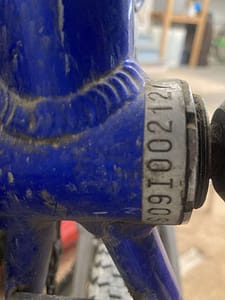
Bike Registries
Another approach to documenting your bike is to register it to a bike registry. This simple effort can go a long way to helping recover your bike if it gets stolen. Police can reference these databases if your bike shows up somewhere suspicious and lands in their hands. These also help if you’re looking to buy a used bike. Cross-referencing bike registries can help prove a bike you plan to purchase is legit. Bike registries go a long way at making bike theft cases salvageable.
Here’s a list of some of the more well-known bike registries:
https://www.myassettag.com/bike/
Digital Trackers
Recently, Apple released the Air Tag. Air Tags are incredible little devices that tap into the Apple device network. You can pick one up for about $25. Stick one somewhere inconspicuous on your bike and if it gets stolen, you’ll have many more options for tracking down your bike. I won’t go into more depth than that here, but if you want to know more, check out this article. Other digital trackers exist, but I don’t see any reason to pick one other than the AirTag if you’re going down that route and you have an iPhone.
-
Product on saleApple AirTags$86.88
Bike theft insurance
Sadly, the majority of stolen bikes are never recovered. Police are often too busy with other duties to give much time or attention to recovering bikes. There’s not much you can do on your own other than spread the word on social media that your bike is stolen and hope someone sees it posted for sale somewhere.
In cases when your bike is gone for good, having solid bike insurance can help get you a new bike.
The first place to look is at your homeowners or auto insurance policy. Depending on where your bike is stolen from, one of these policies may provide some coverage. You can also buy separate bike insurance that will provide coverage for some part of the missing bike regardless of where or how it was stolen.
Here are some additional resources about bike insurance.
https://www.pedalsure.com/blog/does-home-insurance-cover-my-bike
https://www.bikeradar.com/advice/buyers-guides/bicycle-insurance-guide/
Conclusion
The sad news is that no matter what you do, your pricey mountain bike is a hot target and may get stolen. You can take all the safety measures possible, but still end up a victim of bike theft. We all hope this never happens to us, but it may. If it does, don’t quit the sport, stay positive, go buy a new bike, hope your old one shows up, and above all, be a kind, honest, and respectable human to everyone.
